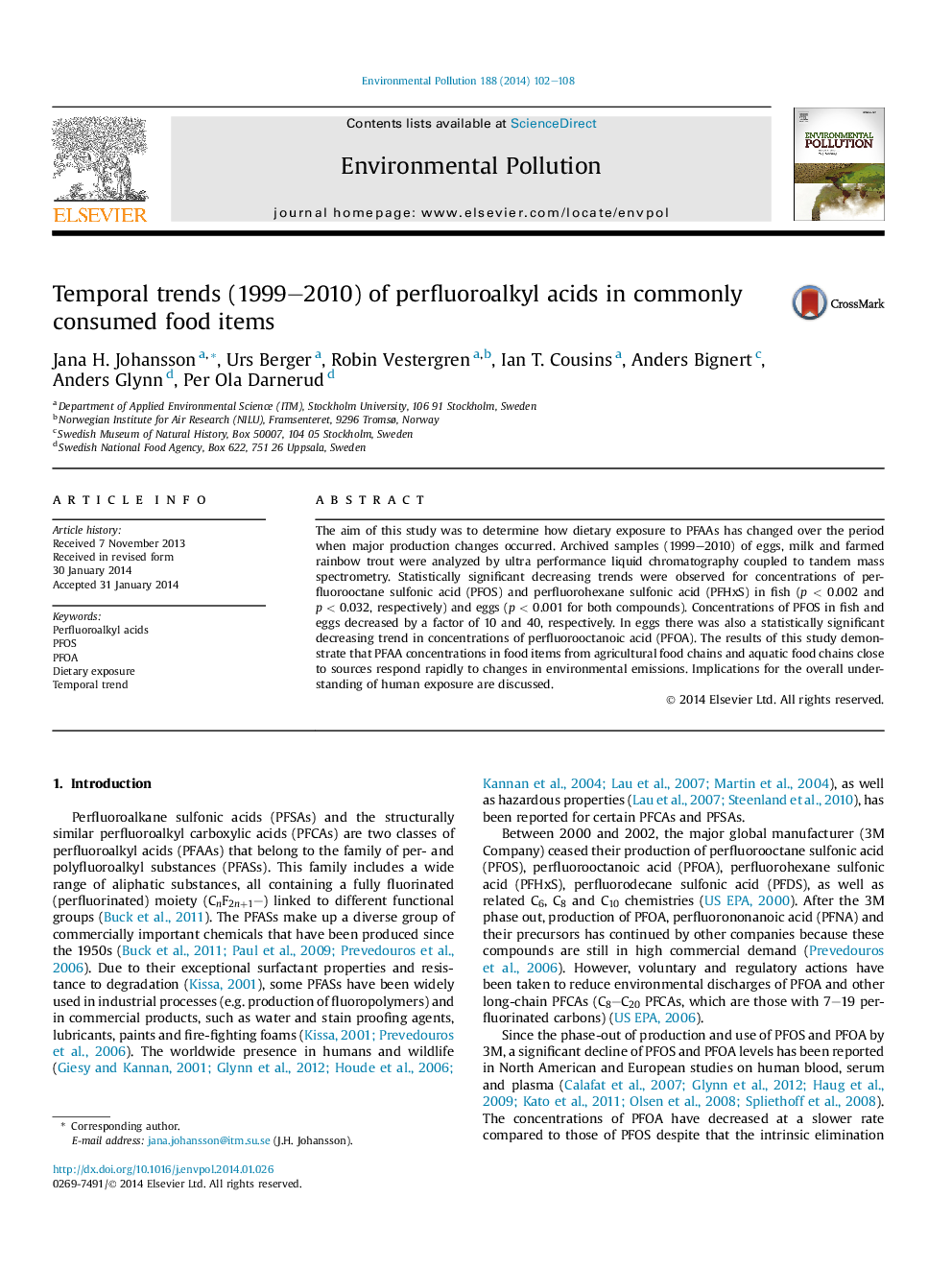| Article ID | Journal | Published Year | Pages | File Type |
|---|---|---|---|---|
| 6318052 | Environmental Pollution | 2014 | 7 Pages |
Abstract
The aim of this study was to determine how dietary exposure to PFAAs has changed over the period when major production changes occurred. Archived samples (1999-2010) of eggs, milk and farmed rainbow trout were analyzed by ultra performance liquid chromatography coupled to tandem mass spectrometry. Statistically significant decreasing trends were observed for concentrations of perfluorooctane sulfonic acid (PFOS) and perfluorohexane sulfonic acid (PFHxS) in fish (p < 0.002 and p < 0.032, respectively) and eggs (p < 0.001 for both compounds). Concentrations of PFOS in fish and eggs decreased by a factor of 10 and 40, respectively. In eggs there was also a statistically significant decreasing trend in concentrations of perfluorooctanoic acid (PFOA). The results of this study demonstrate that PFAA concentrations in food items from agricultural food chains and aquatic food chains close to sources respond rapidly to changes in environmental emissions. Implications for the overall understanding of human exposure are discussed.
Related Topics
Life Sciences
Environmental Science
Environmental Chemistry
Authors
Jana H. Johansson, Urs Berger, Robin Vestergren, Ian T. Cousins, Anders Bignert, Anders Glynn, Per Ola Darnerud,
